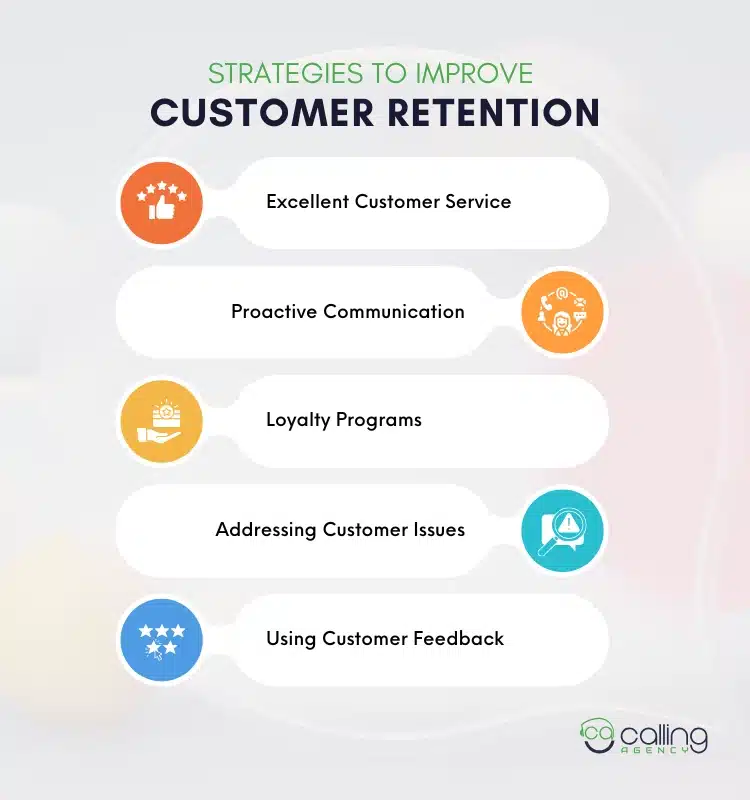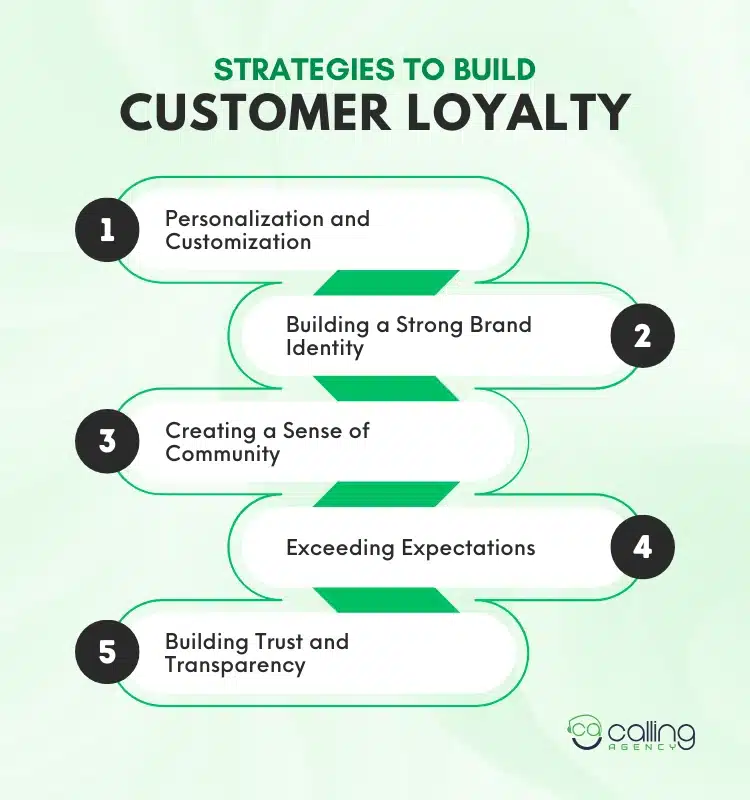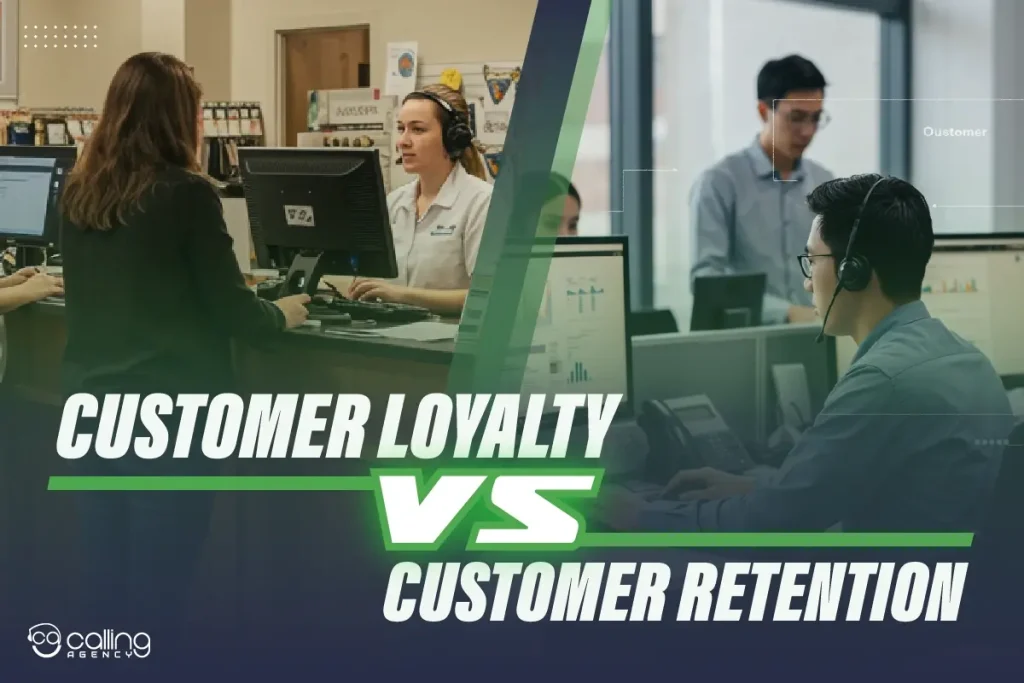Getting new customers is important, but keeping them is necessary for the longevity of your business. Customer retention is a company’s ability to retain customers over time, while customer loyalty involves building strong relationships that lead to repeat business and advocacy.
Why Should You Care About Retention and Loyalty?
- Will increase profitability – A 5% increase in customer retention increases profits by 25% to 95%
- Higher spend: Repeat customers spend more. Customers in the top 10% by order value spend twice as much on average as the other 90% of customers per order.
Those that prioritize both see more revenue, less cost, and stronger brand trust. We will cover how to do this in the following sections. Let’s dive in!
Customer Retention: The Focus on Keeping Customers
Retention rate is one of the key factors for any business’s success. It helps to ensure customer satisfaction and loyalty for the companies.
A loyal group of customers always return for repeat purchases and recommend the brand to other customers. This makes businesses rely less on constantly finding new customers, which saves time and cost.
Why Customer Retention Matters
- Drives Revenue – Repeat customers spend more than first-time buyers. It has been shown that customer retention is cheaper than customer acquisition.
- Builds Brand Loyalty – A happy customer is likely to come back and refer your brand to others.
- Minimizes Marketing Expenses – Retaining reliable customers is better for a brand’s growth than acquiring new customers.
- Refines CLTV(Customer Lifetime Value) – The longer the customer term, the more contribution to your customers.
Key Metrics for Measuring Customer Retention
There are various metrics that businesses use to measure customer retention. These assist in monitoring a company’s customer retention as well as experience improvement.
Customer Retention Rate (CRR)
The customer retention rate means how many customers a business retains for a specific time period. It aids companies in gauging their customer loyalty.
For example, if a company has 500 customers at the start of the month, adds 100 new customers, and ends up with 550 customers, the retention rate is:
(550−100) / 500 × 100 = 90%
Customer Churn Rate
This metric indicates the percentage of customers of a company that discontinue doing business with it in a certain period. A high churn rate means lots of customers are leaving, which is a warning sign.
Customer Lifetime Value (CLV)
CLV, or Customer Lifetime Value, quantifies the expected revenue a business will earn from a customer during their bonds with the company. A higher CLV indicates improved customer retention.
For example, if the average customer spends $50 a month and stays for 2 years, then CLV is:
50 \times 24 = 1200
Net Promoter Score (NPS)
NPS stands for Net Promoter Score, and it is used to quantify customer loyalty and satisfaction. Companies ask customers to rate on a scale of 0-10 how they recommend the brand to other potential customers.
- Promoters (9-10): Loyal customers who refer others positively.
- Passives(7-8): Happy customers but not excited.
- Critics (0-6): These type of customers badly impact the brand’s image.
Repeat Purchase Rate
This is the number of repeat purchases that customers make. A high repeat purchase rate indicates high customer retention.
Customer Effort Score (CES)
The customer effort score determines the measurement of which customers can use your products and resolve the issues related to the products or services on their own. It also helps you to understand the longevity of the customers.
Strategies to Improve Customer Retention
Customer retention is the principal factor in any business’s growth. To sustain a brand for a long term with strong brand value, retaining customers always plays a strong role rather than having the new customers.

Here are five effective ways to improve customer retention –
Excellent Customer Service: Responsive, helpful, and proactive support
People stick with companies that treat them right. For building trust and brand authority, customer service is always necessary.. Here’s how to make your service better:
- Be Responsive: Respond to customer inquiries quickly through inbound calls. We do this because delayed responses can lead to frustration.
- Be Helpful: When answering questions about products and services through calling service, don’t just address the issue. Provide better customer solution that effectively works for your business.
- Get Proactive: Touch base before customers have a problem. Simply give them useful resources, tutorials, and instructions beforehand.
For example – When a customer purchases a product, Include a guide on how to use this product the right way. It is the small gestures like this that have the greatest impact.
Proactive Communication (Updates, Personalised Offers, Content)
Regular communication is key in ensuring customer engagement. Don’t wait for customers to come to you. Take the initiative with:
- Shorter response and updates: Approaches customers with new features, services, and upcoming changes and updates. It allows them to stay in the loop and connect.
- Customized Offers: Optimizing customer data to send customized discounts or promotions to customers based on their preferences with the help of telemarketing services.
- Educational Value: Post informative blogs, tutorials, or videos related to your product or service. By educating your customers, you add value and keep your customers engaged. It can help you to get more effective sales leads for your business.
Let’s say that there is an online store that shares early access to sales exclusively to loyal customers so that they can feel special and remarkable.
Loyalty programs (i.e., rewards and discounts for repeat purchases)
Loyalty programs drive repeat purchases by providing incentives. The benefits of staying loyal to a brand are more visible in repeat purchases. Here are some effective loyalty program ideas:
- Point-Based Rewards: Customers receive points per purchase and can redeem them for discounts or complimentary products.
- Exclusive Discounts: Discounts for returning customers or members.
- Referral bonuses: Give discounts or store credits to those who refer new customers to you.
One example is coffee shops with punch cards, which offer a free drink after a customer makes a certain number of purchases. A straightforward strategy to bring customers back all the time.
Addressing Customer Issues Promptly and Effectively
Ignoring customer problems can result in frustration and a lack of trust. Retention is a serious increase with fast and efficient problem-solving. Here’s how to care for common problems more wisely:
- Acknowledge Problems Promptly: You may not have an immediate solution, but you can let customers know you’re thinking about it.
- Resolve Problems Quickly: Equip your support staff with the knowledge and skills to solve problems quickly and professionally.
- Follow-Up: After resolving a problem, follow up with the customer to see if they’re happy.
Asking for and Using Customer Feedback
Businesses that listen to customers are a huge perk for growth. Collecting feedback gives you insights about their requirements and helps you improve. Some ways to collect feedback are:
- Surveys: Post-purchase or post-support, send short surveys.
- Reviews and Testimonials: Motivate customers to leave reviews and deal with any issues they mention.
- Conversations: Have a direct chat with your customers through live chat, social media, and emails, and ask for their opinions.
Advantages of Maintaining a High Rate of Customer Retention
- Increased Revenue – Repeat customers spend more money over time. You do not offer something up for a one-time sale. Instead, you are selling repeat business, which grows at steady incomes.
- Reduced Acquisition Costs – The cost of acquiring new customers is very high. You have to pay for ads, marketing, and promotions. It costs far less to keep existing customers, so this can save you money while keeping sales up.
- Stronger Brand Loyalty – The customers who feel important become brand advocates. They refer other people to your business and leave positive reviews, resulting in new customers from word of mouth. For example, Apple clients tend to remain loyal for years, thanks to great products and customer service. They also refer Apple to friends, allowing sales to increase at no added marketing cost.
Customer Loyalty: Building Advocates and Emotional Connections
Customer loyalty is the tendency of customers to consistently choose one brand over others. It is much more than satisfaction. Loyal customers have an attachment to your brand and trust it well enough to come back.
Loyal customers always play the role of brand advocates along with purchasing products. They refer others to your business for natural growth. Maintaining customer loyalty is highly important for services like call answering.
What is the Difference Between Customer Loyalty and Customer Retention?
Customer retention is ensuring customers come back to buy from you, while loyalty is all about emotional connection and advocacy. A retained customer simply buys out of convenience, while a loyal customer actually becomes an advocate for your brand.
A person, for example, may only buy groceries from the nearest store (retention), but if the same person drives 30 minutes to shop at Grocery Store X because they love Grocery Store X, that’s loyalty.
Indicators of Customer Loyalty
- Customer Retention Rate (CRR) – This tracks how many customers continue doing business with you over time. A high retention rate indicates strong loyalty.
- Customer Lifetime Value (CLV) – Customer lifetime value (CLV) measures the amount of revenue that a customer can generate over the course of their relationship with your business.
IMPORTANT: CLV is higher, which means, that the customers are spending more on you, because they are loyal.
- Net Promoter Score (NPS) – NPS indicates the probability that clients will refer your brand to others. A high NPS indicates loyal customers become advocates of the brand.
- Customer Satisfaction Score (CSAT) – This metric depends on feedback from customers and satisfaction surveys. Customers tend to stick around if they are happy.
- Repeat Purchase Rate – It measures how frequently customers come back to purchase more. Repeat purchase rate measures loyalty. A high repeat purchase rate signifies great loyalty.
- Customer Effort Score (CES) – This shows how easy or difficult it is for your customers to reach you. Keep customers loyal by making seeking out support, ordering, and navigating your website as easy as possible.
Strategies to Build Customer Loyalty

Personalization and Customization: Adapting experiences to individual needs and preferences
Customers choose a business for their purposes when they feel understood. It makes them feel special, and personalization makes them feel valued.
- Implement customer data to offer product suggestions received from previous purchases.
- Write personalized emails with exclusive deals for birthdays or anniversaries.
- Repeat across online, in-store, and mobile channels for a consistent experience.
Netflix, for instance, recommends shows based on viewing history, which gives customers the sense that the service understands what they want.
Building a Strong Brand Identity and Values: Resonating with Customer Beliefs
Companies mission statements should be in line with their values and beliefs that help you connect with them. A well-defined brand presence creates consumer loyalty.
- Sit down and define your mission and vision, and communicate them consistently.
- Adapt your giving to social or environmental causes that are meaningful to your audience.
- Develop an emotional connection through behind-the-scenes stories.
A brand that includes a set of values. For example, Patagonia is a brand that prospers in loyalty because it holds environmental sustainability. As a result, it attracts customers who have similar values as well.
Creating a Sense of Community: Raising connection among customers
Brick by brick, building a community around your brand keeps customers loyal. Establish digital groups or forums for customers to engage with one another.
- Initiate some events, webinars, or meet-ups to connect with your audience.
- Stimulate user-generated content reviews on social media posts.
Exceeding Expectations: Providing exceptional and memorable experiences
Satisfying customers by exceeding their expectations will create unforgettable experiences that build loyalty.
- Provide quick and effortless customer service.
- Reward customers with unexpected perks or bonuses.
- Keep the employee and operational processes consistent in delivering high-quality service and products.
Another example of a company that overtakes its customers’ expectations is Zappos, which provides free overnight shipping and superior customer service.
Building Trust and Transparency
The basis of customer loyalty is trust. Customers who trust your brand will stay loyal to it.
- Be transparent about pricing, policies, product details, and more.
- Be accountable for mistakes and work to find solutions right away.
- Safeguard customer data and respect their privacy.
For instance, one way Apple builds trust is by paying attention to data privacy, which helps customers feel safe when using their devices.
Advantages of Strong Customer Loyalty
Here are some benefits of building Customer loyalty:
- More Referrals – Repeat clients will often recommend your business to family and friends, naturally bringing you new customers at little to no cost of marketing.
- Increase in Customer Lifetime Value (CLV) – They spend more over time as loyal customers, increasing revenue and decreasing the need to unsettle through customers constantly.
- Brand Advocacy – When customers admire your brand, they protect it from criticism and talk about it on social media, allowing you to build a strong reputation.
Customer loyalty is not simply repeated purchases but building relationships. Companies, in this way, build lifelong advocates by providing personalized experiences, standing up to solid values, building community, going the extra mile, and being transparent.
Key Differences Between Customer Retention and Customer Loyalty
These are often used interchangeably, as many businesses do. However, they are different concepts. Retention is keeping customers coming back, and this is all about loyalty. A strong emotional connection with your users.
Customer Retention vs Customer Loyalty – A Comparison Table
| Feature | Customer Retention | Customer Loyalty |
| Definition | Building customer retention and repeat purchase. | Building a connection that causes consumers to choose and promote the brand. |
| Primary Focus | It’s highly focused on encouraging the repetition of the purchases. | It’s focused on building long-term relationships with the customers for brand identity and value. |
| Why Customers Stay | Customers looked forward to their convenience, price, habit, or necessity. | Customers really love and trust the brand. |
| How It’s Measured | The retention rate, the churn rate, the repeat purchase rate. | Net Promoter Score (NPS), overall customer satisfaction score, and number of word-of-mouth referrals. |
| Brand Advocacy | Retained customers are unlikely to advocate for the brand. | Customers who are loyal recommend and defend the brand. |
Why Do Businesses Need Both?
Retention alone can keep customers in the accounts receivable column for months or years, Wilderness explains, but lacking loyalty, they will just as easily jump ship to a competitor.
Conversely, establishing loyalty without retention tactics can hamper revenue growth. That’s because a strong business strategy prioritizes retention and loyalty.
The Relationship Between Customer Retention and Customer Loyalty
When done well, customer retention strategies can lead to customer loyalty. Here’s how:
- Retention Strategies are the Foundation – Customers are likely to stick around when they get great products, great service, and smooth experiences from businesses.
- Emotional Engagement Makes Satisfied Customers Become Loyal Customers – Good experiences are repeated over time, creating a deeper bond that turns repeat customers into advocates.
Brands That Balance on Both Sides of the Thread
- Apple - Customers come back because of high-quality products (retention), but return out of loyalty due to a strong emotional bond with the brand and the ecosystem.
- Amazon – Customers are retained by Amazon through convenience and competitive pricing, but their trust in the Amazon service and fast delivery builds longer run loyalty.
- Nike – The brand keeps its customers loyal not just through fresh new product offerings but also thanks to its strong branding and community-led marketing initiatives, which have made people become fans for life.
How Customer Service Improves Customer Loyalty and Retention
In terms of both retention and loyalty, customer service is a huge factor. Fast, empathetic, and solution-focused support transforms the customer experience, keeping them on your side and building emotional loyalty toward your brand.
Six Critical Aspects of Customer Service That Increase Retention and Loyalty
- Speedy Service – Customers want quick answers. Delay or ineffective support can push them to compete.
- Empathy and Personalization – Providing thoughtful and compassionate responses to customer issues builds trust and emotional loyalty.
- Solution-focused Approach - Problem-solving effectively prevents stir up and upgrades repeat business.
- Omnichannel Support – With support on different platforms (such as live chat, phone, email, and social media), customers can easily reach out.
- Self-Service Options – Through FAQs, chatbots, help centers, etc., customers can find answers and resolve issues immediately, making for a better experience.
Zappos, for example, is renowned for its outstanding customer service. Their agents do everything in their power to resolve customer problems, transforming one-time purchasers into devoted brand ambassadors.
Conclusion
Both customer retention and customer loyalty are crucial to the long-term success of a business. Retention is what brings customers back, while loyalty creates a bond that turns customers into advocates.
Key Takeaways:
- Retention refers to repeated purchases, and loyalty refers to emotional attachment.
- While customers retained are valuable, loyal customers can be a brand’s best evangelists.
- Improved retention and loyalty due to customer satisfaction in providing great customer service.
This means businesses need to invest in strategies that promote both retention and loyalty. Investing in customer service team, personalization, and continued value.





